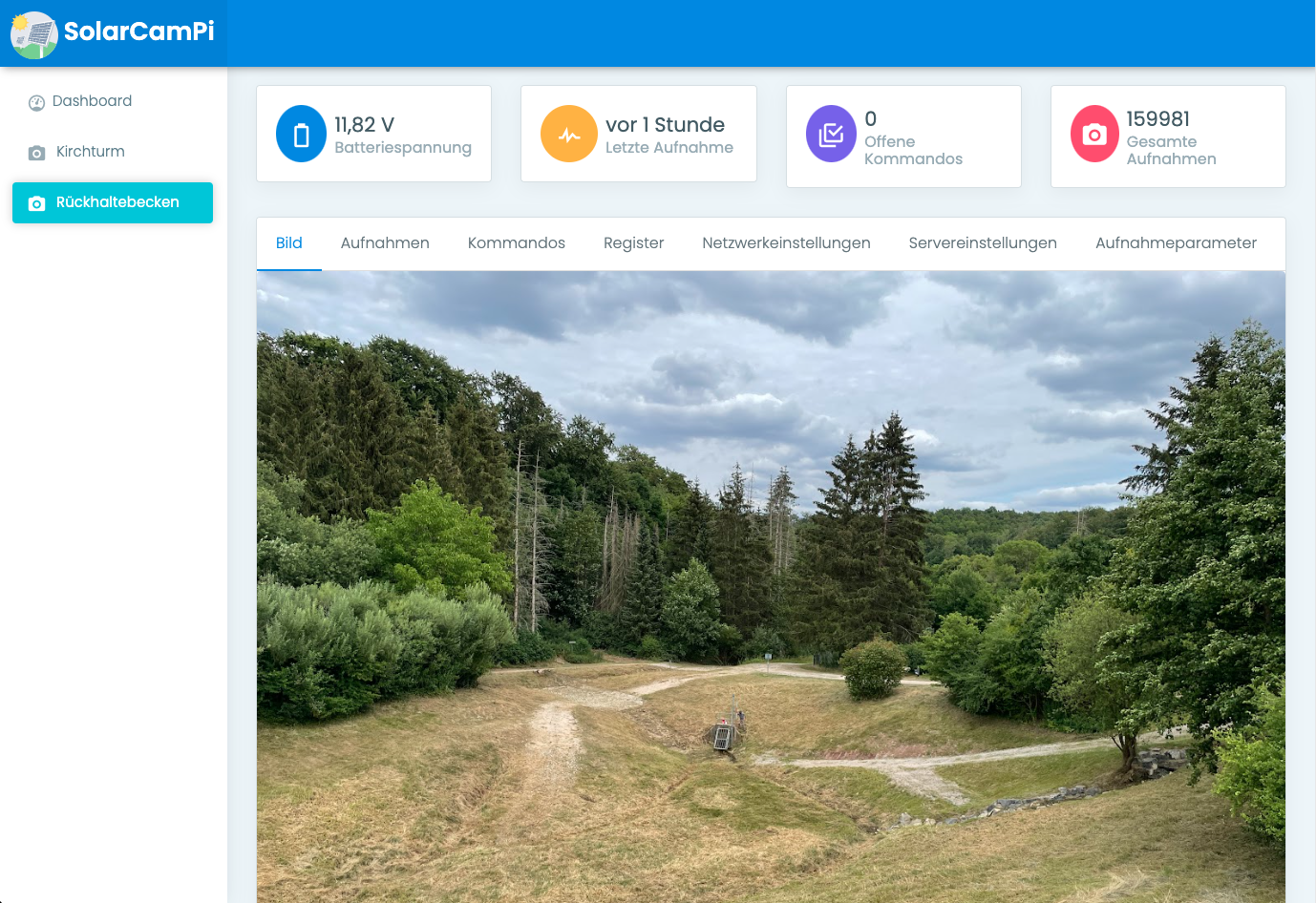SolarCamPi


What is it?
SolarCamPi is an off-grid webcam solution, that can take a picture using a Raspberry Pi Camera or a USB webcam every 5 minutes and send the image over a long-distance WiFi link.
Using a very specialised Linux image on the Raspberry Pis SD card, booting, taking a picture and sending it over WiFi can be done in under 15 seconds. This allows the Raspberry Pi to be powered off most of the time, saving energy.
A small 5W solar panel with a 16F, 16V ultracapacitor bank can run this setup permanently, even at night.
Technical specs:
- 15s runtime with 200mA current draw
- 15Ws energy per picture
- Undervoltage lockout
- Image upload via HTTP Post
- Voltage reporting via HTTP Post
- Configurable parameters via I2C
- Wide input voltage range: 3V to 18V
- Low idle/quiescence current: 11µA
- Using ATmega328 (main MCU), INA119 (power measurement), TPS71533 (LDO), TPS63070 (buck boost)
Example installation
With a 7.2Ah lead-gel battery, this installation can run without any external power for several months.
Continuous operation, even with long-term exposures at night is possible with the small solar panel.


Remote fleet management
SolarCamPi’s communicate with a cloud-hosted web panel, which can be used to view the captured images.
Device status (battery voltage, solar panel parameters, etc.) can be tracked as well.

The web interface provides a list of all image uploads, with additional telemetry like the WiFi signal strength, custom image parameters, etc.

Configuration (network settings, API keys, management tunnels, cutoff voltages, image intervals) can be remotely changed and will be applied at the next image upload:

On-device PHP interpreter allows for maximum flexibility even in tricky setups.
A user-defined PHP script takes parameters like the current time or external sensor inputs and can modify the image acquisition accordingly. This script can also return additional telemetry (like sensor values).

Commands (like configuration changes, firmware updates, register read/write) will get queued online and delivered with the next image upload cycle. After the next image upload has finished, the camera is sent a list of tasks to execute (like updating files, etc.):

Early prototype hardware


Links
- Hardware & Firmware: legacy AVR version
- SD card image: Buildroot repo